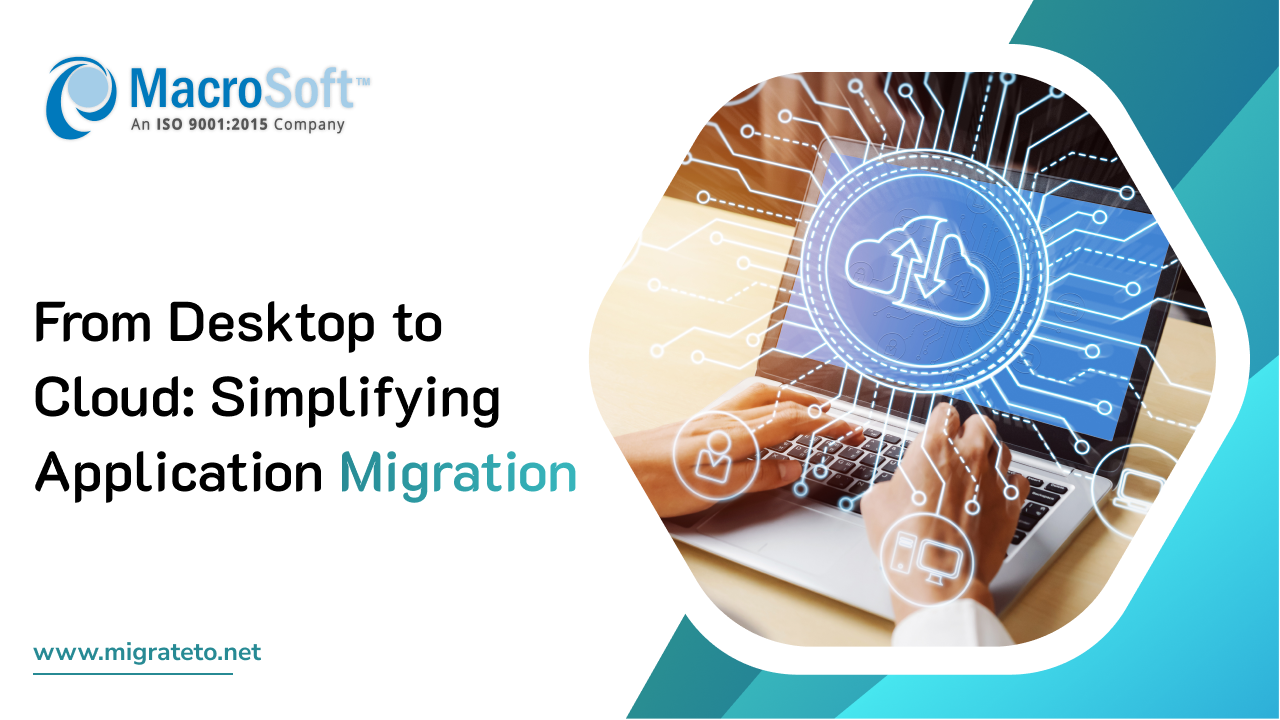
By Imran Salahuddin | Published on August 28th, 2024 | Last updated on September 30th, 2024 |
Businesses today need to work smarter, spend less, and stay ahead of the competition. One of the most effective strategies for achieving these goals is migrating applications from traditional desktop environments to the cloud. This blog explores the process of application migration, its benefits, the challenges faced, and how to simplify the transition.
Application migration is the process of moving an application program from one environment to another. In this context, we focus on moving desktop applications—software that runs locally on personal computers—to cloud-based environments. Depending on the technology and business needs, this transition can involve a total rewrite of the application or a simpler re-hosting process.
The cloud has revolutionized how businesses operate. According to a report by Gartner, the global public cloud services market was expected to grow by 18% in 2021, reaching $304.9 billion. This growth reflects a broader trend of organizations recognizing the advantages of cloud computing.
While the benefits are significant, migrate desktop applications to the cloud is not without its challenges.
To navigate the complexities of application migration, organizations can follow a structured approach:
1. Assessment and Planning
Before migrating, conduct a thorough assessment of your existing applications. Determine which applications are suitable for the cloud and prioritize them based on business needs. A survey by RightScale found that 84% of organizations have a multi-cloud strategy, emphasizing the importance of thorough planning.
2. Choosing the Right Cloud Model
Decide on the cloud model that best fits your needs—public, private, or hybrid. Public clouds are cost-effective and ideal for small to medium-sized businesses, while private clouds offer enhanced security for sensitive applications.
3. Selecting the Right Cloud Provider
Choose a credible cloud service provider that meets your specific needs. Evaluate factors such as pricing, support, and the features offered by different providers. Leading providers like AWS, Microsoft Azure, and Google Cloud offer extensive migration tools and resources.
4. Migration Strategy
Develop a detailed migration strategy. Several methodologies can be employed, including:
5. Pilot Testing
Before a full-scale migration, conduct pilot tests for a subset of applications. This trial run allows you to identify potential issues and fine-tune the migration process.
6. Migration Execution
Once testing is complete, execute the migration plan. Ensure that all stakeholders are informed and ready for any adjustments needed during the migration process.
7. Post-Migration Review
After migration, conduct a review to assess performance, gather feedback, and ensure that applications are running smoothly. This step is essential for identifying areas for improvement.
Several companies have successfully migrated their desktop to cloud migration, showcasing the process and its benefits:
Migrating from desktop applications to the cloud is a strategic move that can enhance business efficiency, scalability, and collaboration. While challenges exist, a structured approach can help organizations minimize risks and streamline the process. Businesses can harness the full potential of cloud computing by assessing existing applications, choosing the right cloud model and provider, and implementing a detailed migration strategy.
As the digital landscape continues to evolve, embracing cloud technology will be vital for organizations seeking to stay competitive. The shift from desktop migration is not just a technical transformation; it’s a strategic decision that can drive innovation and growth in the modern business environment.
Macrosoft will help you with your desktop-to-cloud migration to facilitate this transition. With a suite of tools and services designed to support this journey, Macrosoft can assist in navigating the complexities of migration efficiently. As you consider moving your applications to the cloud, leveraging Macrosoft’s expertise can significantly enhance your migration experience, ensuring that you maximize the benefits of cloud computing while overcoming potential challenges. Contact us today!